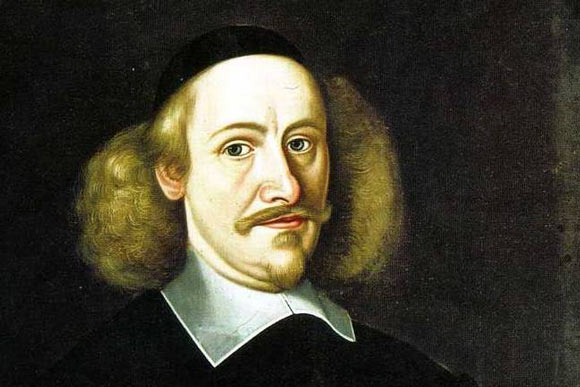Otto von Guericke invented “Vacuum Pump”, “Dasymeter” and “Pressure Measurement”
Otto von Guericke was a German physicist, scientist, inventor, and politician of the 17th century, who was a pioneer in the science of vacuums. He was born on November 20, 1602 to an aristocratic family from Magdeburg, Germany. He studied at the University of Leipzig, and later got a degree in law in 1621 at the University of Jena and another degree in mathematics and mechanics in 1623 at the University of Leiden.
After traveling through France and England, Guericke came back to Magdeburg in 1626. He then got married to Margarethe Alemann, who was the daughter of a local politician. Guericke himself became actively involved in local politics and was elected in 1627 to the city council. In 1631, the imperial army invaded Magdeburg and Otto von Guericke had to escape from the city along with his family. However, he returned after the city was liberated and was reelected to the city council. Guericke was now a military engineer and he was later to become the mayor of Magdeburg and serve in that capacity for the next 35 years.
Although he was largely occupied by his political career, Guericke was just as devoted to scientific study as well. At that time, there had only been ongoing debate about the possibility of the presence of a vacuum but it had never been scientifically proven. There were three broad opinions prevalent at that time. First was the view put forth by Aristotle, that a vacuum simply cannot exist; second was the view of St. Augustine which suggested that there was an “intimate relation between space time, and matter” and the third view was the school of Leibniz and Kant which suggested that space is not real, but only exists in the human imagination.
Guericke set about to prove the existence of a vacuum through scientific study and experimentation. He conducted experiments for many years before he was finally successful. At first, he filled a wooden barrel with water and sealed it. Then, using a pump, he gradually pumped out all the water thinking that it would create a vacuum. However, air seeped in through the pores in the wood and this experiment was unsuccessful.
After many years of further research, in 1650 he invented an air pump which he fitted precisely into a metal sphere. He used the pump to suck the air out of the sphere. After several attempts and modification of equipment, Guericke was able to succeed in creating a vacuum. He demonstrated his discovery to a large crowd before Emperor Ferdinand III in 1654. His experiment was conducted by joining two copper hemispheres together and creating a vacuum inside them using his pump. Then he brought a team of 8 horses to try to pull the copper hemispheres apart, which the horses were unable to do. However, as soon as air was released into them, they fell apart of their own accord.
The same experiment was performed at the court of Friedrich Wilhelm I of Brandenburg, only with three times as many horses as before. His theory was later further developed by other scientists such as Newton in later years. Guericke also created the first frictional electrical generator in 1663 and studied the static charge of objects which later led to further developments in the field of electricity. He also studied astronomy and the movements of planets and comets and constructed the first electrostatic generator and a crude barometer for weather forecasting in 1661. Guericke died in 1686 in Hamburg, Germany. Amongst his legacy is “The Otto von Guericke University of Magdeburg” which is named after him.
